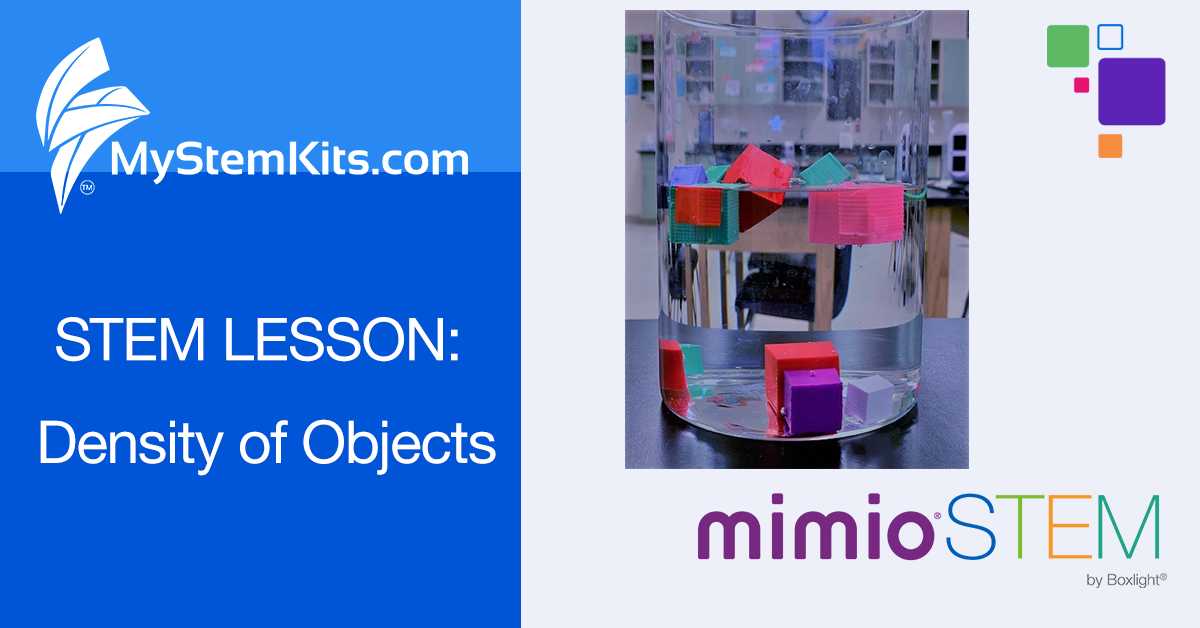
In this lesson Meredith Williams, Boxlight MimioMaster, shares how she used the MyStemKits Density Cubes Kit to help her students demonstrate understanding of the concept of density.
Density of Objects
STEM Supplies:
- MyStemKits Density Cubes Kit
- graduated cylinders
- rulers
- scales
- marble
- rubber stopper
- calculators
Grade level: 8
Objectives: Students will -
- demonstrate that density is independent of size.
- practice calculating density of objects using two different methods.
Time frame: one class session, or approximately 45 minutes
*For a description of the Density Cubes Kit, watch the video: Density Cubes Kit & Density Shapes Kit.
This Density of Objects lesson is aligned to:
- SC.8.P.8.3 Explore and describe the densities of various materials through measurement of their masses and volumes.
Lesson description
In groups of 3 or 4, students completed lab activities at two stations.
Station One required students to use the graduated cylinder to calculate the volume of different objects - small cubes, marble, rubber stopper. First, students needed to calculate the volume of the objects using the graduated cylinder. Then they used the scale to determine the mass of the objects to calculate the density.
Station Two required students to use a ruler to measure the dimensions of cubes to calculate the volume. The cubes for this station were assorted sizes, and they were different for each group that visited the session. Students needed to first predict whether they believed the object would float or sink (typically students say smaller objects float and larger objects sink). After predictions were made, students calculated volume using the ruler, measured mass using the scale and calculated the density of each object.
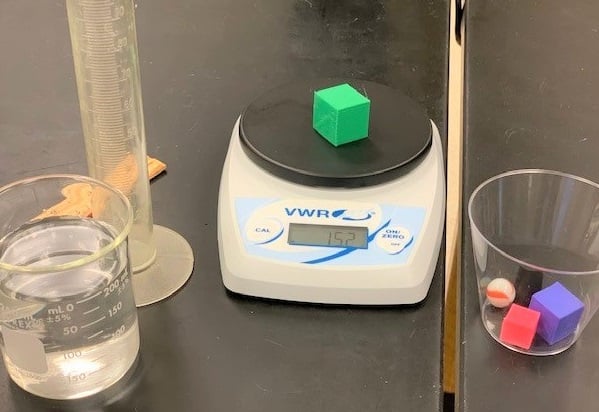
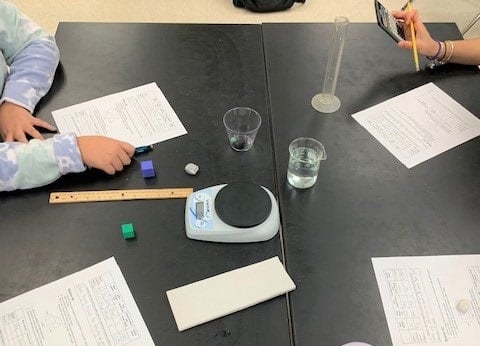
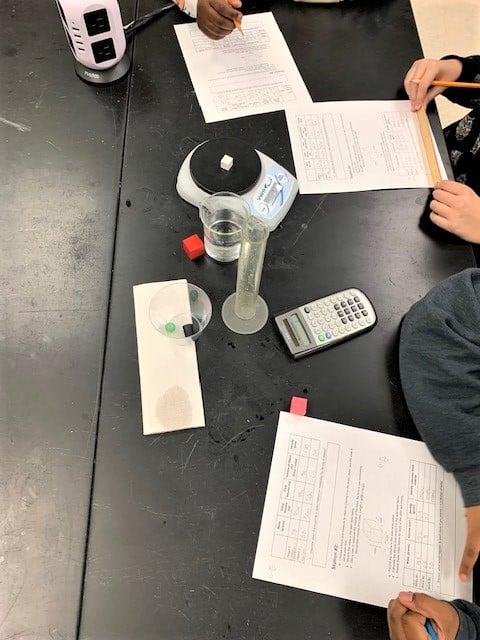
Before placing each object in the water, students were given the opportunity to revise predictions based on density. Objects greater than 1.0 g/mL sink while objects less than 1.0 g/mL will float. This is information that students were taught and should apply.
After predictions were revised, students tested their predictions by placing all blocks into water. Note what two students observed:
“Wait, how is the small one sinking and large one floating?” - E. Jean
“Oh, now I get how the density determines if an object floats or sinks, not the MASS!” - V. Garcia
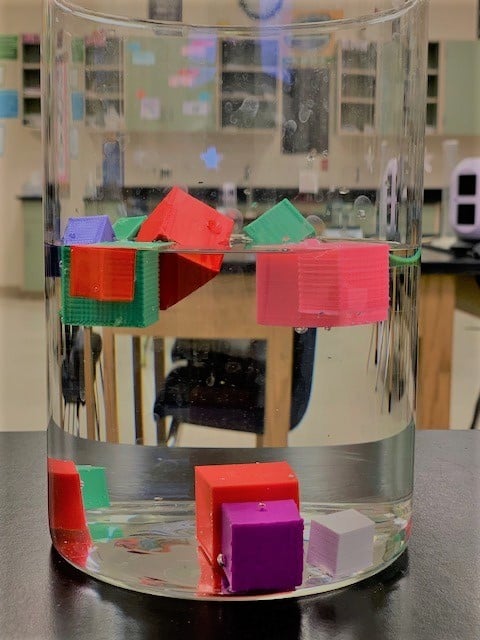
Each group had color-coated cubes. Some small cubes would sink while others would float. The same for the large cubes. Students were able to recognize that small and large cubes of the same color either sink or float. This was to help students understand and visualize that density is independent of sample size as long as the matter is the same. For the lab purposes, each color represented a different matter.
Ideally, I would have liked to incorporate the Density Shapes Kit for this assignment, however I could only get all those objects to float and could not get any of the shapes to sink regardless of shape. However, even without the shapes the lab was a success and students were able to practice calculations, measurements, as well as gain a better understanding of what density is and why it is an important physical property of matter.
About the Author: Meredith Williams, an 8th grade science teacher at Freedom Middle School (Orlando, FL), specializes in integrating MimioSTEM solutions in her science instruction. To encourage her students to think critically and creatively about problems through science exploration, Williams incorporates a variety of 3D-printed manipulatives, so her students have something hands-on to observe, analyze, and form ideas around. Williams also regularly implements and provides feedback on MyStemKits lessons and activities, which she uses in conjunction with her 3D printer.


